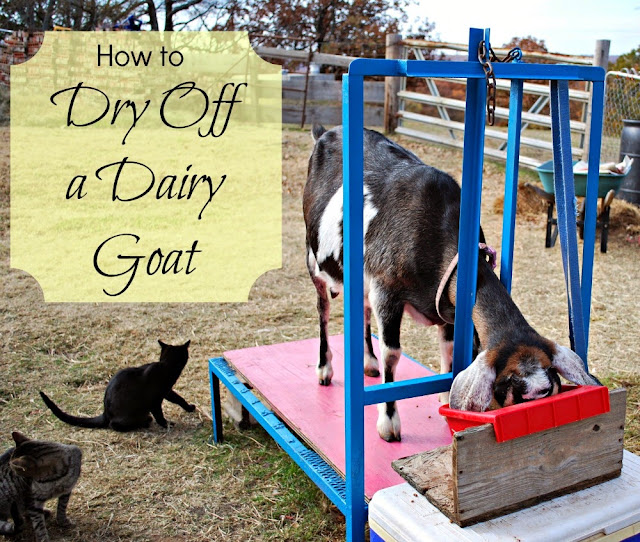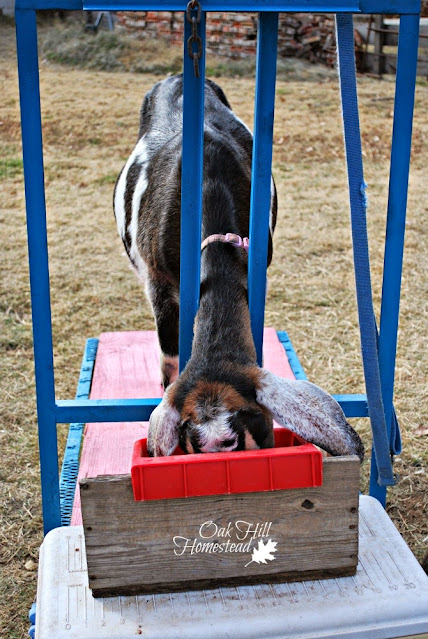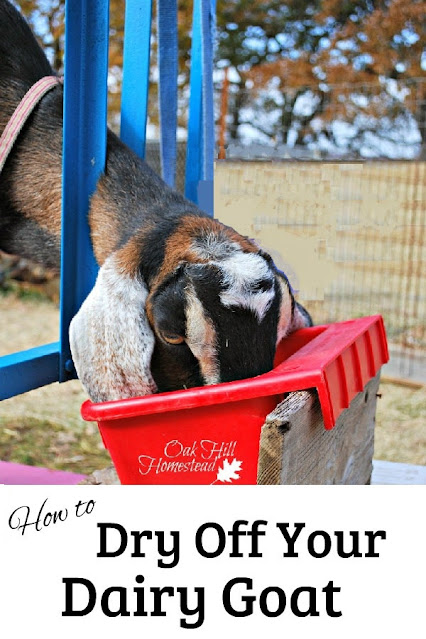Learn how to properly stop milking a dairy goat. Discover the importance of drying off your goat responsibly, how to prevent mastitis, and how to ensure your goat's health during the transition.
How to dry off a dairy goat
You've been milking your dairy goat for months, and enjoying the process. But fall is coming, your goat is bred so she'll kid in the spring, and it's time to give her a well-deserved rest.
Letting your goat "dry off" is crucial when your goat is bred, so her body can grow healthy kids without the added physical stress of producing milk.
But you can't just walk away and leave her unmilked. She'll be very uncomfortable, and can develop mastitis.
This drying-off process takes about 2-3 weeks when done properly.
Why you need to dry off your dairy goat
Drying off your dairy goat isn't just a matter of convenience, it's necessary for your goat's health.
Letting your doe stop producing milk for a period of time allows her udder to rest and recover for the next lactation period. She can regain the weight and body condition she may have lost during lactation, which can also improve future milk production.
Her body will also be able to focus on growing healthy kids instead of on producing milk.
When to stop milking your dairy goat
Most goat owners keep their dairy goats in milk for approximately 9-10 months. Once a goat is bred, she should be dried off (allowed to stop producing milk) 2-3 months before she kids again, so that she can put her body's energy into growing her kids.
There are exceptions, of course. Some goats are able to produce milk for much longer than one season. Their owners breed them every other year instead of every year.
Other goats are "done" in the fall. By November they might only be producing a cup of milk or even less daily.
Whichever camp your goats are in, it's best to have a plan, with breeding and kidding dates well-thought-out and the drying-off period planned accordingly.
You might also find yourself in a situation like mine. I was planning to take a trip out of state to visit my new grandson, so I needed to stop milking earlier than usual.
The Chief (my husband) takes over the feeding chores when I'm gone, but he doesn't milk goats. I wanted to be sure that my goat Ziva was dried off and comfortable before I left town.
So, how do you dry off a dairy goat?
The easiest way to stop milking your goat
If your goat is nursing kids and you just want to stop milking, you can simply stop milking. Her kids will take care of the rest!
However, if she isn't nursing kids and you've been milking twice or even just once a day, you'll need to do this more gradually and carefully.
The first step to dry off your dairy goat
On my homestead, the first step in drying off a goat is to stop milking in the evening and only milk once a day, in the morning.
This signals the doe's body to stop producing as much milk, because there isn't as much demand for milk as there used to be.
As well as milking less often, you should decrease the amount of grain you feed your doe. This lower-calorie diet helps to slow down her milk production.
Since I feed my does on the milkstand while I'm milking, I also cut Ziva's daily grain ration in half simply by elimnating the evening milking.
You could, of course, eliminate the morning milking and only milk in the evening if that suits your schedule better. You're in charge here, do what works best for you.
Keep milking once a day for about a week before taking the next step.
The second step
After a week, my next step is to stop milking the goat out completely when I milk in the morning. In other words, I don't strip her udder completely.
Leaving some milk in the udder tells the doe's body that her milk isn't needed in the same quantity, so she starts producing less.
Don't rush the process. Give the doe's body plenty of time to respond to each change. I prefer to allow at least a week, or even longer, to each step.
The third step
Then I milk every other morning. Again, this lessens the demand on her body, and she should produce even less milk.
Over time I'll leave even more milk in the udder. As the amount I'm milking decreases, I'll continue to decrease her ration of grain which in turn should also decrease the amount of milk she produces.
As a goat lover and a homestead gardener, I'm excited to also share my gardening tips with you - from planting seeds to enjoying the fruits (and vegetables) of your labor! You can find my gardening advice and insights right here, so let's dig in and cultivate some fresh, delicious produce together.
The final step in drying off your goat
Finally I'll milk my goat every three days, and eventually I'll stop altogether, still keeping an eye on her udder to be sure she isn't engorged and uncomfortable. I don't want her to develop mastitis.
What is mastitis?
Mastitis is inflammation of the mammary glands.
This inflammation can be caused by several different reasons, usually bacterial infection. Other causes can be an injury or a virus such as caprine arthritis encephalitis (CAE).
When drying off a goat, the cause of mastitis would most likely be bacterial. Antibiotics may be required. Mastitis can be hard to get rid of, and in the worst cases can cause the loss of the goat's udder and milk production.
Taking plenty of time to dry up your doe's milk can prevent mastitis.
The importance of cleanliness while drying off your goat
Cleanliness is just as important while drying off your doe as it was when you were milking and consuming the goat's milk.
Since bacteria is the most common cause of mastitis, it's important to wash the goat's teats and your hands before milking.
Don't neglect using teat dip after milking to close the orifice and keep bacteria from entering. Also keep the goat's bedding area clean and dry.
Keep watch on your goat
If you notice that your goat's teats are full during this process - painfully full - you can milk out a small quantity to relieve the pressure.
Don't remove all the milk though, since that will signal her body that there is a need to produce more milk.
Even after she's dry - not producing milk - it's important to keep an eye on her. Mastitis can show up after you think she's stopped lactating. If her teats look full when they shouldn't be, you need to investigate.
Check her udder for warmth and tightness. Milk out a small amount into a cup and examine the milk for lumps, clumps, flakes and stringiness, all signs of mastitis.
Call your veterinarian if needed. Mastitis should not go untreated. There are natural treatments for mastitis in goats.
~~~~~
My mission is to inspire and encourage you to live a simple, joyful life,
no matter your circumstances or where you live. Join me here:
Facebook | Pinterest | Instagram | Subscribe

















